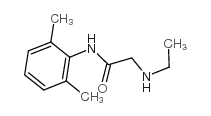Efficacy of lidocaine for pain control in subcutaneous infiltration during liposuction.
Daniel A Hatef, Spencer A Brown, Avron H Lipschitz, Jeffrey M Kenkel
Index: Aesthet. Surg. J. 29(2) , 122-8, (2009)
Full Text: HTML
Abstract
Liposuction remains the most commonly performed aesthetic surgical procedure in the United States. Preoperative infiltration of the subcutaneous tissues with a wetting solution has become standard. These solutions typically contain some amount of lidocaine for pain control. High doses of lidocaine have been demonstrated to be safe, but large amounts of this cardioactive agent during elective cosmetic procedures may be unnecessary.A study was designed to examine the effects of wetting solutions with lower concentrations of lidocaine on perioperative pain.Seventeen patients were prospectively randomized to subcutaneous infiltration with one of 3 different lidocaine concentrations: 10 mg/kg, 20 mg/kg, or 30 mg/kg. Intra- and postoperative lidocaine and monoethylglycinexylidide (MEGX) plasma concentrations were measured and the total intraoperative inhalation gas requirements and minimum alveolar concentrations were recorded. Postoperative pain medication requirements were recorded and morphine equivalents were calculated. Patient pain level was subjectively assessed by using a visual analog pain scale.There was no difference in the intraoperative lidocaine or MEGX concentrations between any of the 3 groups. There was also no statistical difference between the 3 groups when comparing intraoperative inhalational gas requirement, postoperative morphine equivalence requirements, or subjective pain using the visual analog scale.Decreasing concentrations of lidocaine in infiltrative wetting solutions did not significantly affect intraoperative anesthesia requirements or postoperative pain with liposuction. Lower concentrations of lidocaine can effectively be used, use of any lidocaine may be unnecessary. Future investigations may examine whether total elimination of lidocaine yields similar results in terms of anesthesia requirements and postoperative pain.
Related Compounds
| Structure | Name/CAS No. | Molecular Formula | Articles |
|---|---|---|---|
 |
Monoethylglycinexylidide
CAS:7728-40-7 |
C12H18N2O |
|
Transplacental Distribution of Lidocaine and Its Metabolite ...
2015-07-01 [Reprod. Sci. 22 , 791-7, (2015)] |
|
Concentrations of dimethylaniline and other metabolites in m...
2015-01-01 [Food Addit. Contam. Part A. Chem. Anal. Control. Expo. Risk Assess. 32 , 1256-64, (2015)] |
|
MEGX test in hepatology: the long-sought ultimate quantitati...
1993-08-01 [J. Hepatol. 19(1) , 4-7, (1993)] |
|
Pharmacokinetics of lidocaine and its metabolite in peridura...
2008-12-01 [Eur. J. Clin. Pharmacol. 64(12) , 1189-96, (2008)] |
|
Effect of 4% topical lidocaine applied to the face on the se...
2010-01-01 [Aesthet. Surg. J. 30(6) , 853-8, (2010)] |